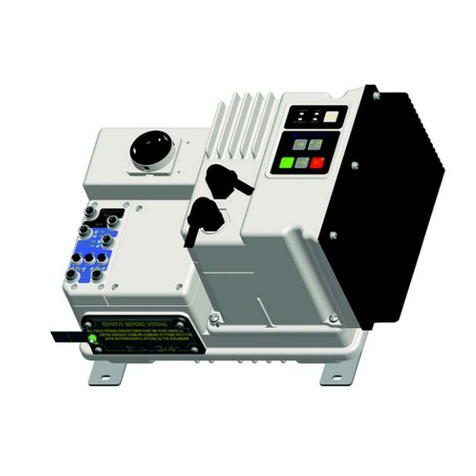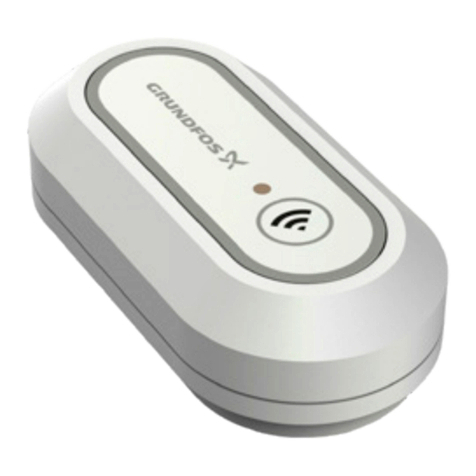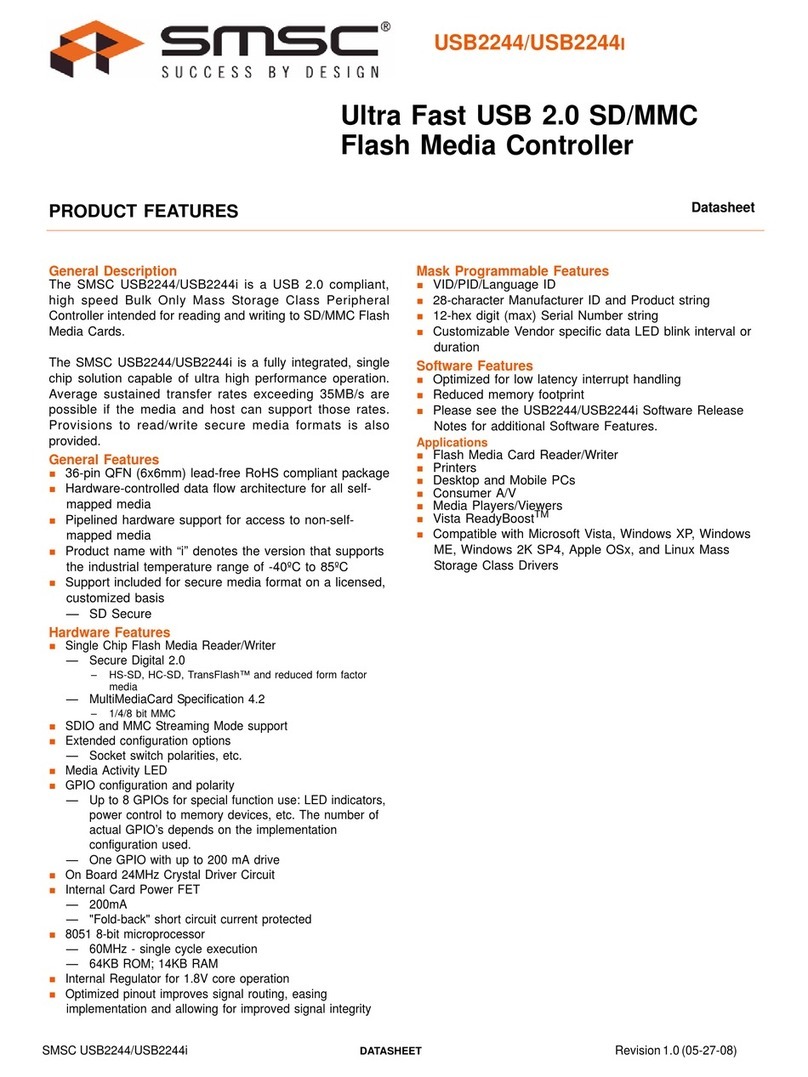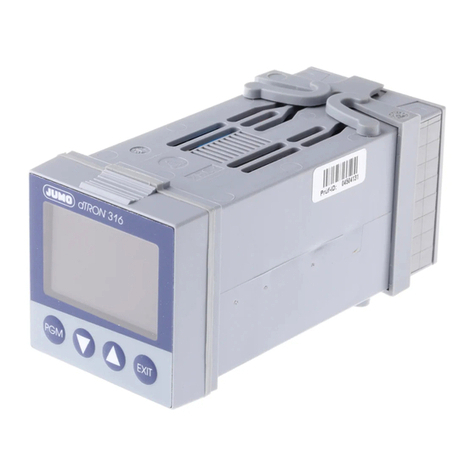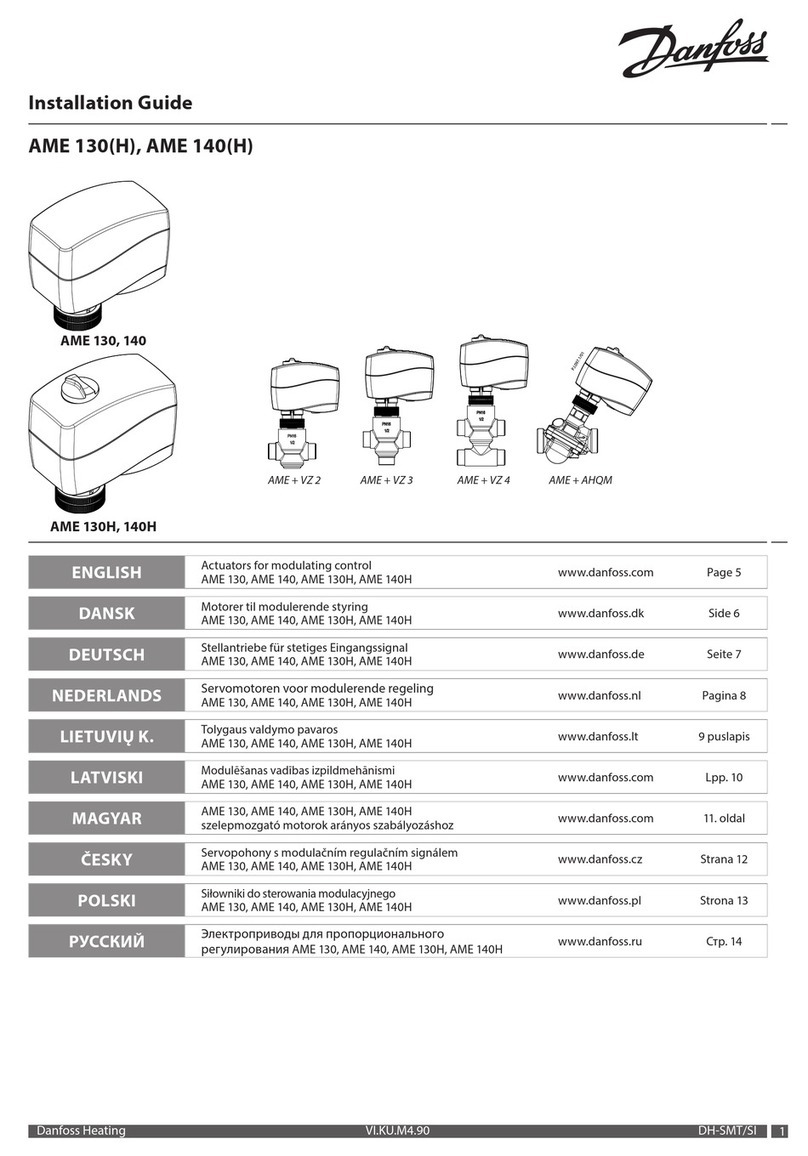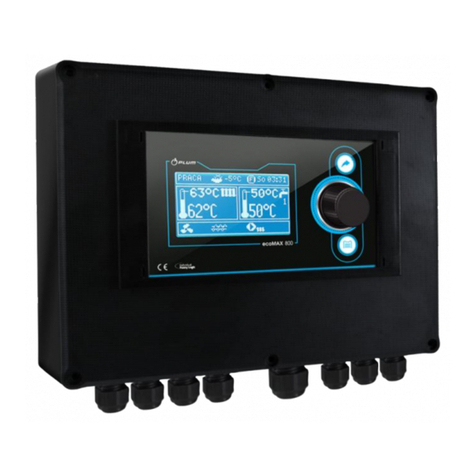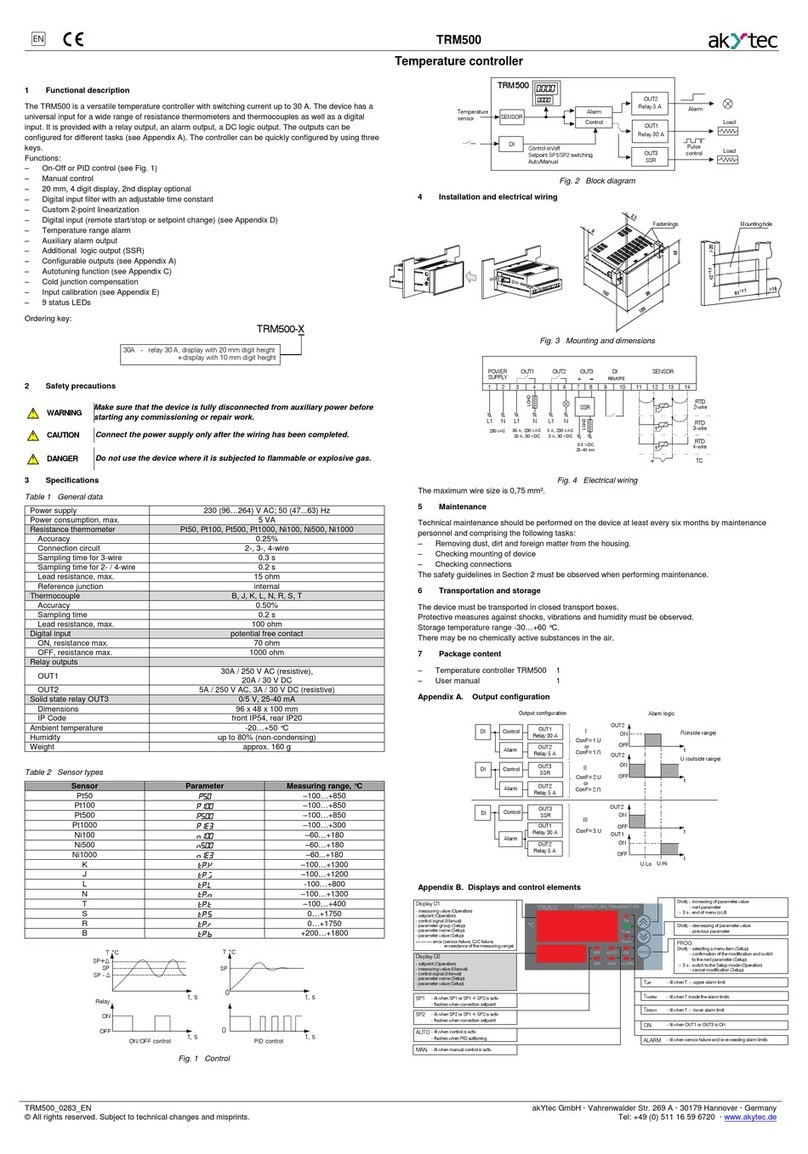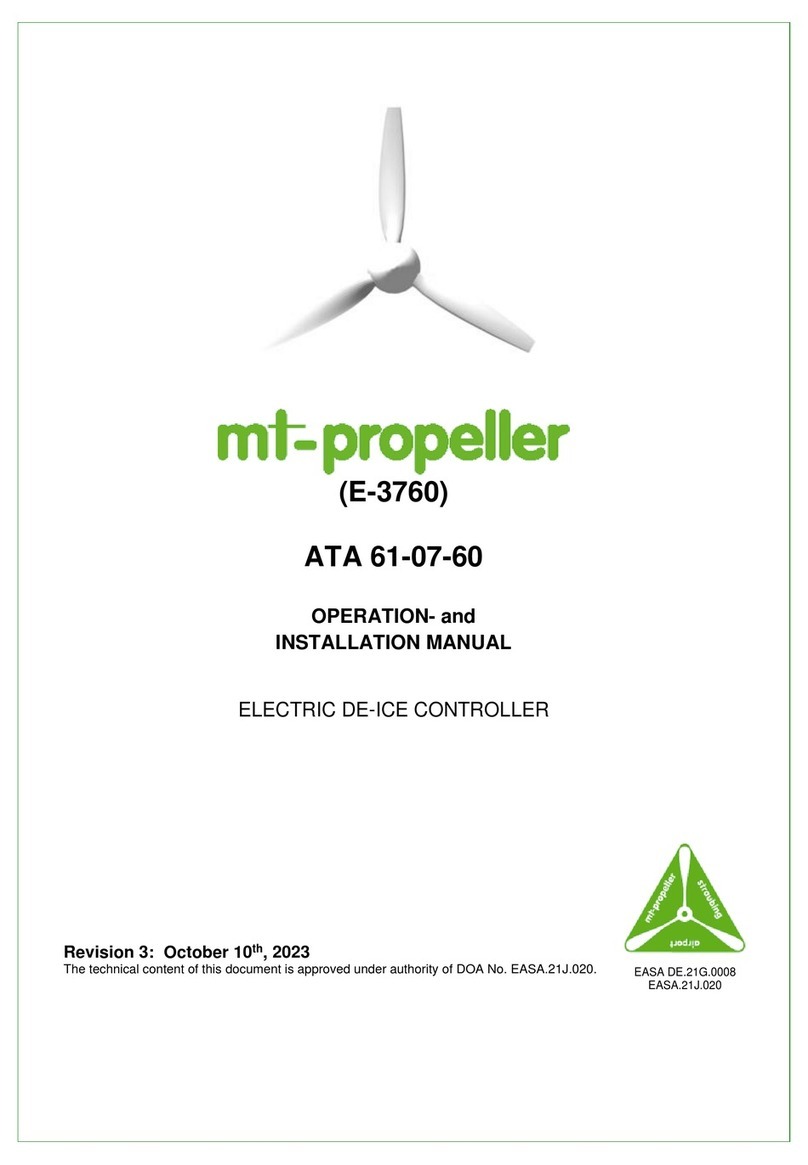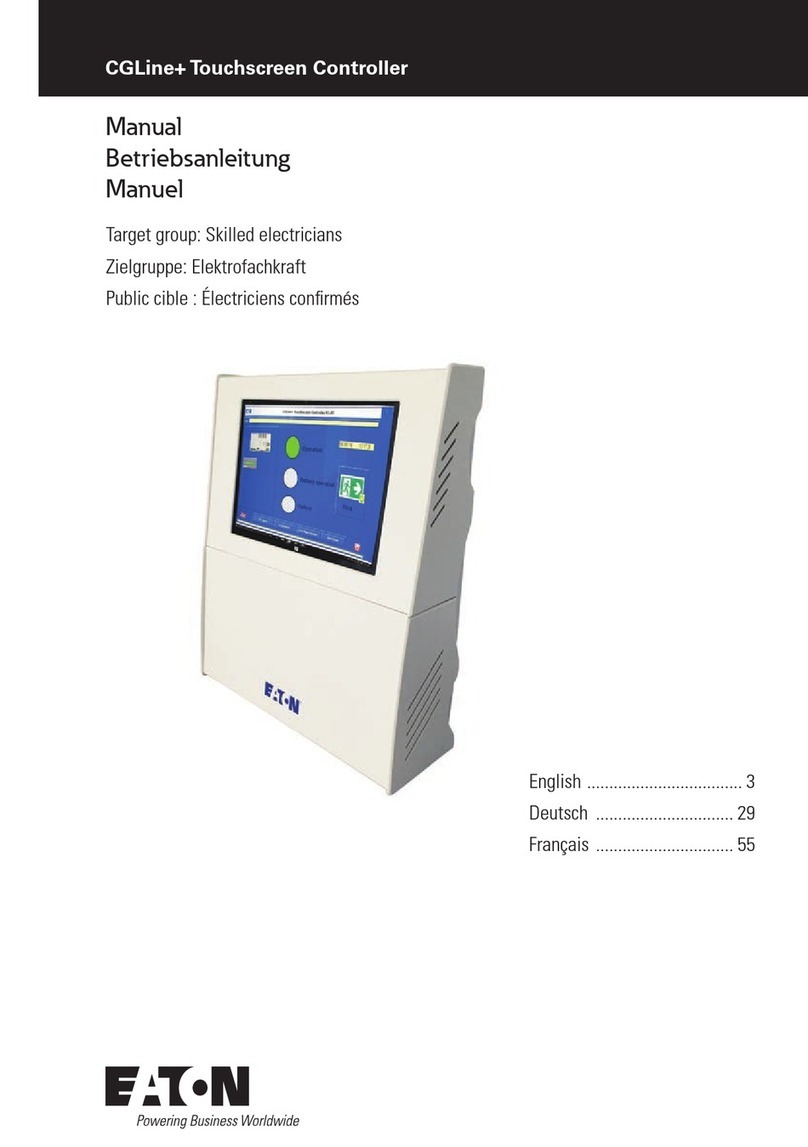Eggtimer Rocketry Eggtimer Quark User manual

Eggtimer Quark
Assembly Manual
Board Rev D3
© 2021 Eggtimer Rocketry
All Rights Reserved

Disclaimers, Legal Stuff, Etc.
The Eggtimer Quark is meant to be used for hobby and experimental rocketry purposes.
Although hobby rocketry has an admirable safety record, largely due to the efforts of the good
people at the National Association of Rocketry (NAR) and the Tripoli Rocketry Association
(TRA), rocketry can be dangerous if proper safety precautions are not observed. This is
particularly true with some of the advanced techniques like pyrotechnic parachute deployment
and airstarting motors. People can and have been seriously injured by not following
recognized and accepted safety practices. We cannot be responsible for your actions.
We strongly recommend that if you are not a member of either the NAR or the TRA, you join
one of them, join a local rocketry club, and pick the brains of experienced members before you
try any kind of electronic deployment or airstart flight. The safety information included in
these instructions is by no means comprehensive or complete, and is no substitute for the
supervision and advice of experienced rocketeers.
Limited Warranty
Eggtimer Rocketry warrants that all of the parts on the packing list of this Eggtimer Rocketry
kit have been included, and that they are all in working condition. If you are missing
whatever it is that you are missing. If you are missing something really egregious (like the PC
board or the processor, for example), we may ask you to return the entire kit unbuilt, we will
send you a prepaid shipping label for this purpose. We’d especially like to see the packing list
so we can figure out what went wrong so it doesn’t happen again…
If your Eggtimer Quark does not work properly after assembly, take a deep breath, get out the
magnifying glass and a good light, and see if you have inadvertently created a solder bridge
somewhere. Chances are pretty good that you have, or that you have installed a part
incorrectly. We are a very small company and we just don’t have the resources to repair your
board, but we will be more than happy to give you advice and we might be able to help you
find your error if you send us some high resolution pictures, to
techniques; if you do not have experience building kits of this nature, we recommend that you
enlist some help. (Another reason for joining a rocketry club, there is usually at least one
electronically-inclined member who can be bribed with a beverage or two to give you a hand.
Engineering types love a challenge, especially if it’s easy for them but hard for you.)
Eggtimer Rocketry warrants that when properly assembled this Eggtimer Rocketry product will
perform substantially according to the published documentation. This means that we spent a
lot of time trying to ensure that it’s going to work the way that we say it does, and we try to fix
things that don’t quite work right in a reasonable time. Nevertheless, we can not and do not
warrant that this product is perfect and will meet every rocketry purpose, for the simple reason
that we can’t test every possible rocket/motor/environmental combination. It is the buyer’s
responsibility to determine the suitability of the Eggtimer Quark for their particular purpose. If
you have a problem with this, please contact us and we will be happy to send you a prepaid
return label for your unbuilt kit and we will refund the purchase price on receipt of your kit.

California Proposition 65 Warning
WARNING: This product contains chemicals (lead) known to the State of
California to cause cancer and birth defects or reproductive harm.
This kit includes a special low-temperature ultra-fine leaded solder wire.
Including the solder with the kit ensures that you will have solder that can be
used to mount the surface-mount parts in the kit. Leaded solders have been used
for over a century in electronic assembly, but you should take the following
precautions when using it (or just about any chemical, for that matter):
• Do not eat or drink while using it
• Wash your hands after handling it
• Keep it in the protective bag when you’re not using it
The MSDS can be found at
http://www.kester.com/download/245%20FluxCored%20Wire%20Lead%20Allo
y%20SDS.pdf
The European Union RoHS (Restriction on Hazardous Substances) regulations
exempt kits such as the Quark from its regulations, because they are not for resale
and since it is well known that hand soldering with non-leaded solder is much
more difficult and more damaging to heat-sensitive components.

Before You Start…
• Check the parts against the Packing List in the kit, and let us know right away if anything is
amiss.
• Go to our web site at www.Eggtimerrocketry.com and download the latest Release Notes.
• Go to our web site at www.EggtimerRocketry.com and download the latest Users Guide..
• Read them thoroughly before starting… it will save you some grief later, we promise!
~~~~~~~~~~~~~~~~~~~~~~~~~~~~~~~~~~~~~~~~~~~~~~~~~~~~~~~~~~~~~~~~~~~~~~
Thanks for buying an Eggtimer Quark. The Quark is named after a tiny elementary atomic
particle, which aptly describes the unit. It is designed to be extremely easy to use, and is also
very small so you can put it in virtually any rocket that you could possibly want. You can fire
the Drogue chute at either nose-over (just past apogee) or you can add 1 second for backup use,
and the Main chute can be fired at 300’, 500’, 800’, or 1000’. It beeps out your apogee after
every flight, and you can easily test the deployment channels. Finally, you can actually stream
live altitude and status data out the serial port for simple telemetry use.
Like other Eggtimer Rocketry products, we sell it as a kit, to keep costs down and provide an
outstanding value. This means that you have to do a little work, of course, but considering that
most hobby rocketeers that would use our products have some degree of electronics expertise,
this should not be much of an impediment. If you do not have any experience soldering kits
such as the Quark, we recommend that you ask around… chances are that somebody in your
rocketry club would be more than happy to assist you for a small bribe (beverages work well!).
About Soldering Your Quark…
Assembling your Quark isn’t that hard, but we recommend that you don’t choose it as your
first kit project. You must be able to solder small components using fine solder and get nice
shiny solder joints. If you have never soldered before, you need to learn anyway, because if
you are going to do rocketry electronics you’re going to be doing some soldering. If you want
to get into advanced projects like telemetry, you’re probably going to be doing a lot of
soldering. We recommend that you get a few small kits from Ramsey or SparkFun, put them
together, and hone your skills on them first. There’s a lot of fun stuff out there, so go for it!
The Quark uses mostly Surface Mount Technology (SMT) parts, they are large by SMT
standards, and are within the realm of being hand-solderable. In order to help make your
assembly successful, we have included about 12” of very fine (.020”), very low temperature
(about 180°C), no-residue solder. This is not the stuff that you get at Radio Shack… it’s
designed for soldering small temperature-sensitive parts without transferring much heat to the
part itself.
Important note about using extra flux with this board: The solder that comes with the kit is
Kester 245, it uses a water-based “no-clean” flux. If you wish to use extra flux with the board,

it MUST be compatible. You want a liquid (not paste) water-based no-clean flux. Kester 951
is ideal, if you can get it. Chip-Quik sells little 2ml tubes for about $2 each (unfortunately they
sell them in 6-packs, you can’t just get one) which works very well. If you decide to add flux,
you must use only a tiny amount. A few drops will suffice for the entire board. DO NOT use
Rosin Core flux, or you will make a mess of the board and possibly damage components. We
have built many kits without using any additional flux without any issues, the board is pre-
tinned to make solder adhesion easier so in general you should not need to use additional flux.
For soldering components on a board like the Quark, we recommend a small pencil soldering
iron, about 15W. If you are only going to use it occasionally, Weller makes a decent cheap
12W iron, it’s about $15. There is also a similar iron that’s sold by ECG. We like those, but
the copper tips seem to oxidize and corrode rather quickly compared to some more expensive
irons; fortunately, the tips are replaceable and cheap. Better would be a fancier soldering
pencil with iron tips; those run about $30, but they’ll last forever. The best iron would be a
temperature-controlled solder station, they typically start at about $50 for a cheap one and can
go to a few hundred dollars if you want to get really fancy. Weller makes a good one for about
$50, if you make the investment that will probably be the last soldering iron you will ever need
to buy. These solder stations usually have a little well with a tip-cleaning sponge, so they end
up taking less room on your workstation too. Get the smallest tip you can find, preferably a
small conical tip. It should be just about the same width as the processor’s pads.

General Assembly Information
We’re sure that you are ready get started, but before you do you will need to get some tools
together. The tools that you will need are:
___ Low-wattage soldering iron, 15W or less, with a fine conical tip
___ Small needle-nose pliers
___ Small diagonal cutters
___ Tweezers to handle the SMT parts
___ A mesh “sponge”for cleaning the tip of your soldering iron
___ A tinning block to clean and tin your iron as you go along
___ A lighted magnifier… unless you have Superman’s eyes
___ A jeweler’s loupe or small 10x magnifier, for inspecting the SMT solder joints
___ A well-lighted place to work, preferably with a wood or metal surface,
also preferably not carpeted
___ Some PAPER masking tape (do NOT use Scotch® tape or electrical tape)
Each installation step has a check-off line, we strongly recommend that you check them off as
you go, and that you perform the steps in sequence. We have listed the steps in order to make
it easiest to assemble the Quark, deviating from them isn’t going to make your life any easier.
Each step is pictured, so you can see exactly what you need to be soldering. Looking at the
pictures as you go will help prevent you from soldering the wrong thing, or putting something
in the wrong way.

Assembling your Quark
Step 1: Sort the Components
Before you start soldering anything, you need to lay everything out and make sure that you are
familiar with all of components, and that you have everything. (Yes, we ARE human and
sometimes make mistakes… if you are missing something, let us know immediately so we can
send you whatever you need). You should have the following parts, check them off as you sort
them…
Qty Description
__ 1 Circuit board with pre-mounted barometric pressure sensor
__ 1 ATTINY84A-20SU Processor (14-pin SOIC chip)
__ 1 NCP1117-33 3.3V voltage regulator (SOT223 package)
__ 2 VN5E160S Driver Chips (8-pin SOIC chip)
__ 1 FM4001 Rectifier
__ 2 4.7K ohm 0805-sized resistor (marked “472”)
__ 1 10K ohm 0805-sized resistor (marked “103”)
__ 2 100K ohm 0805-sized resistor (marked “104”)
__ 2 .1 uF 0805-sized capacitors (small brown unmarked parts in PAPER carrier)
__ 2 10 uF 1206-sized capacitors (brown, unmarked in PLASTIC carrier)
__ 1 Buzzer
__ 3 3-pin header strip
__ 3 .1” shorting jumpers
__ 1 4-pin x 2.54mm Screw Terminal Block
__ 1 Coil of .020” 63/37 No-Clean solder wire

Note that some of the components are static sensitive, so you should avoid sources of static
electricity while you are handling them. We recommend that you assemble the Quark on a
wood or metal surface unless you are fortunate enough to have a high-temperature anti-static
mat (don’t buy one just to build the Quark, however!) A piece of ceramic floor tile works
great, too. Avoid putting it on plastic surfaces that generate static, and preferably put it
together in a room that’s not carpeted. That being said, it’s very unlikely that you will zap any
of the components in the Quark with static electricity, but consider yourself notified of the
possibility…
Also note that some of the components are polarized, i.e. it matters which way you put them in.
If you solder one of these components in backwards, the effect will range from not making any
noise (buzzer) to nothing at all working. It is CRITICAL that you test-fit the parts before you
solder, and that you make SURE that you have them pointed the right direction before
soldering. Like the old adage says, “Measure twice, cut once.” If you solder a part onto the
board incorrectly, it can be a minor pain to remove if it only has two pins, or it can be virtually
impossible for something with a lot of pins. The Eggtimer Quark Limited Warranty does not
cover incorrect assembly, so if you mess up badly enough you may end up having to get
another kit and starting over; neither of us want that.
There are several different resistor values, so make sure you get the right ones in the right
place. They are marked on the boards, but once again you need to make SURE that you have
them in the right place before soldering. Unsoldering parts on a small circuit board like the
Quark isn’t a lot of fun, even if you have a vacuum desoldering tool. Trust us, we’ve been
there before…
It is very important that you assemble the Quark in the order listed. This makes it easier to
access the surface-mount components, if you start soldering out of order it’s going to be tough
for you to get to the pads of the SMT parts.

Before you solder anything, make absolutely sure that you have the correct part and that it is
inserted in the board correctly. The board has all of the component values, outlines, and
polarities silk-screened on the top, so there shouldn’t be any doubt about what goes where and
how. Nevertheless, if you have any questions about the assembly procedure, do not hesitate to
may have to wait a day for the answer, but it could save you a lot of grief later on!
The Eggtimer Quark Limited Warranty does not cover damage to parts while attempting to
desolder them because you inserted something incorrectly. We spent a lot of time making
sure that the assembly instructions were clear, but once again if you have any questions about
OK, so let’s get started…
Mounting the Resistors and Capacitors
There’s a definite technique to mounting small SMT parts like the 0805 resistors and caps that
come with the Quark kit. Once you get the hang of it, a lot of people think it’s easier than
mounting through-hole parts, because you don’t have to bend leads, tape the part down to the
board, or clip the leads after you solder them.
To mount these parts…
1) Lightly tin ONE pad.
2) Hold the part in place with tweezers, then heat up the tinned pad until the solder flows
underneath the part. Hold for a few seconds, then remove the iron.
3) Hold the part in place for another 5 seconds until the solder cools. When you let it go, it
shouldn’t move… if it does, you didn’t get a good solder joint, you need to start over.
4) Using as little solder as possible, solder the OTHER pad to the part.
5) Inspect both solder joints with a 10x jewelers loupe, making sure that the solder covers the
pad and wicks up to the lead on the part. Touch up the solder joint if necessary, adding just a
tiny bit of solder if necessary. Don’t overheat the part if you do this, because the whole part
can lift off the board and stick to your soldering iron if you do.
It is critical that you both inspect the solder joints, AND make sure that no solder has bridged
over to other parts. In particular, the parts that are mounted around the silver-colored pressure
sensor need to be soldered carefully, if you get a solder bridge onto the pressure sensor it may
be very difficult to fix since the pads on the pressure sensor are on the bottom of the part, not
the sides.
We provide a few extra parts for the 0805-sized parts because they’re easy to lose. Chances
are good that you’ll be thanking us for that at some point in the assembly…

Mount the Top 100K resistor
___ Tin the right pad of the top 100K resistor, marked “104” on the right side of the board.
___ While heating up the tinned pad, place the 100K (104) resistor on the center of the pad.
Remove the soldering iron, and let it cool for 5 seconds before you let go of the resistor.
__ Solder the left pad of the 104 resistor. Check both solder joints with a 10x jeweler’s loupe
to make sure that the solder joints are nice and shiny and that they cover both the resistor and
the pad. Reheat and touch up the solder joints if necessary.

Mount the Top Driver Chip
___ Locate the top driver chip on the board, it’s just below the 104 resistor that you just
mounted. Lightly tin the upper-right pad on the board.
___ Remove one of the driver chips from its carrier. Look at the writing with a
magnifier… you will notice that there is a “ST” logo on the top-left corner of the chip. That is
the Pin 1 mark, which must align with the little box in the top-left corner of the driver chip
marking on the PC board.
___ Place the driver chip on the board, and hold it in place while heating up the previously
tinned upper-right pad. Make sure that the chip is centered on all eight pads, then carefully
remove the soldering iron and wait 5 seconds for the solder to cool.

___ Carefully solder the lower-right pad. Check the pad with a 10x jeweler’s loupe to
make sure that the solder joint covers both the lead of the chip and the pad on the PC board.
It’s very easy to get solder on the chip’s lead but miss the PC board pad; a good solder joint
should actually flow underneath the chip lead and bond the “elbow” of the lead to the pad.
___ Now, solder the remaining leads in the same manner. You may have to go back and
resolder the first lead (the one that you tinned earlier).
___ Go back and check all of the leads with a 10x jeweler’s loupe, and retouch as
necessary.
Right-Hand Leads…

Left Hand Leads
Mount the Bottom 100K resistor
___ Tin the right pad of the bottom 100K resistor, marked “104” on the right side of the
board, just below the driver chip that you just mounted.
___ Solder the bottom 100K resistor in place in the same manner as the top one.
Mount the Bottom Driver Chip
You will now mount the bottom driver chip… it’s mounted the same way as the top one.

___ Locate the bottom driver chip on the board, it’s just below the 104 resistor that you just
mounted. Lightly tin the upper-right pad on the board.
___ Remove one of the driver chips from its carrier. Look at the writing with a
magnifier… you will notice that there is a “ST” logo on the top-left corner of the chip. That is
the Pin 1 mark, which must align with the little box in the top-left corner of the driver chip
marking on the PC board.
___ Place the driver chip on the board, and hold it in place while heating up the previously
tinned upper-right pad. Make sure that the chip is centered on all eight pads, then carefully
remove the soldering iron and wait 5 seconds for the solder to cool.
___ Carefully solder the lower-right pad. Check the pad with a 10x jeweler’s loupe to
make sure that the solder joint covers both the lead of the chip and the pad on the PC board.
It’s very easy to get solder on the chip’s lead but miss the PC board pad; a good solder joint
should actually flow underneath the chip lead and bond the “elbow” of the lead to the pad.
___ Now, solder the remaining leads in the same manner. You may have to go back and
resolder the first lead (the one that you tinned earlier).
___ Go back and check all of the leads with a 10x jeweler’s loupe, and retouch as
necessary.
Mount the Processor
___ Orient the board so that it’s pointed vertically, with the previously-soldered
componetnts on the bottom.

___ Locate the space for the processor, it’s a 14-pin chip on the right side of the board.
Note that there is a notch on the “top” side of the processor; this will help you orient the chip
properly.
___ Lightly tin the upper-left lead of the processor pads on the PC board.
___ Remove the processor from it’s package, and inspect it with a 10x jeweler’s loupe.
You will see that there is an indented “dot” on one corner of the package. That is the “Pin 1”
mark, it must go on the upper-left corner of the pads on the board.
___ Place the processor chip on the board, and hold it in place while heating up the
previously tinned upper-right pad. Make sure that the chip is centered on all 14 pads, then
carefully remove the soldering iron and wait 5 seconds for the solder to cool.
___ Carefully solder the lower-right pad. Check the pad with a 10x jeweler’s loupe to
make sure that the solder joint covers both the lead of the chip and the pad on the PC board.
It’s very easy to get solder on the chip’s lead but miss the PC board pad; a good solder joint
should actually flow underneath the chip lead and bond the “elbow” of the lead to the pad.
___ Now, solder the remaining leads in the same manner. You may have to go back and
resolder the first lead (the one that you tinned earlier).

Mount the .1 uF Capacitor Next to the Processor
___ Tin the right pad of the .1 uF capacitor next to the processor.
___ Solder the capacitor in place in the same manner as the resistors. Note that the right
pad is next to the upper-right pad on the processor... they are actually connected, so don’t
worry about any extra solder getting on the processor lead.

Mount the 10K Resistor
___ Locate the 10K resistor pads, it’s next to the Pin 1 mark on the processor and is marked
“103” on the board.
___ Tin the right pad of the 10K resistor next to the processor.
___ Solder the 10K resistor in place in the same manner as the other resistors. Note:
Unlike the .1 uF capacitor that you soldered earlier, this resistor does NOT connect to the
nearby processor lead, so if you get a solder bridge between the two you will need to remove
the excess solder with some desoldering wick.
Mount the .1 uF Capacitor Next to Baro Sensor
___ Locate the spot on the PC board for the .1 uF capacitor just above the silver baro
sensor.
___ Tin the right pad of the .1 uF capacitor.
___ Solder the .1 uF capacitor in place in the same manner as the other resistors &
capacitors.

Mount the Two 4.7K Resistors
___ Locate the spot for the two 4.7K resistors, they’re just to the left of the silver baro
sensor and are marked “472” on the board.
___ Tin the right pad of the top 4.7K resistor.
___ Solder the top 4.7K resistor in place in the same manner as the other resistors &
capacitors.
___ Similarly, mount the bottom 4.7K resistor.

Mount the 10 uF Capacitors
___ Locate the space for the 10 uF capacitor just above the two 4.7K resistors.
___ Solder the 10 uF capacitor in place in the same manner as the other resistors &
capacitors.
___ Locate the second 10 uF capacitor, to the left of the processor and the .1 uF capacitor.
___ Solder the 10 uF capacitor in place in the same manner as the other resistors &
capacitors.

Mount the Voltage Regulator
___ Locate the spot for the voltage regulator on the PC board, it’s near the left side of the
board. You’ll see that there is one large pad on the right side, and three smaller pads on the left
side.
___ Lightly tin the center pad of the three pads on the left.
___ While heating up the tinned pad, hold the voltage regulator in place on the pads. Make
sure that it’s centered on the pads, then remove the soldering iron, and let it cool for 5 seconds
before you let go of it.
Table of contents
Popular Controllers manuals by other brands
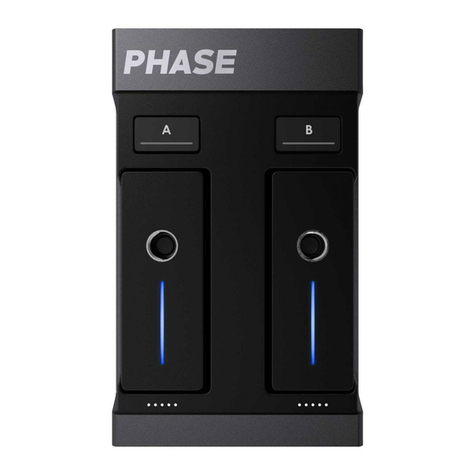
MWM
MWM PHASE ESSENTIAL quick start guide
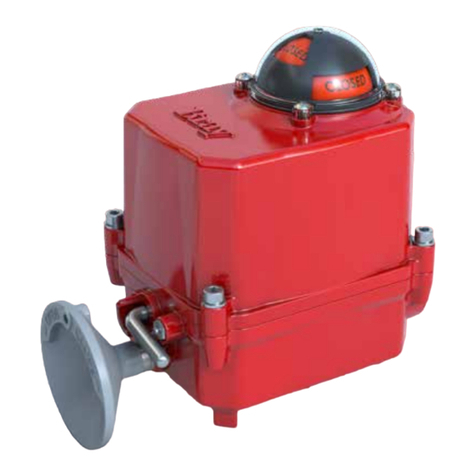
Bray
Bray 71 Series Installation, operation and maintenance manual

CyberPower
CyberPower BR700ELCD user manual
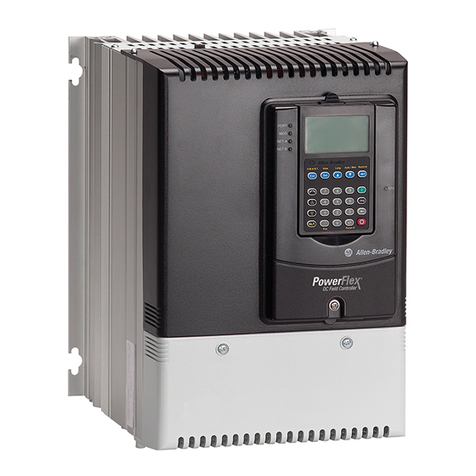
Allen-Bradley
Allen-Bradley PowerFlex DC Hardware Service Manual
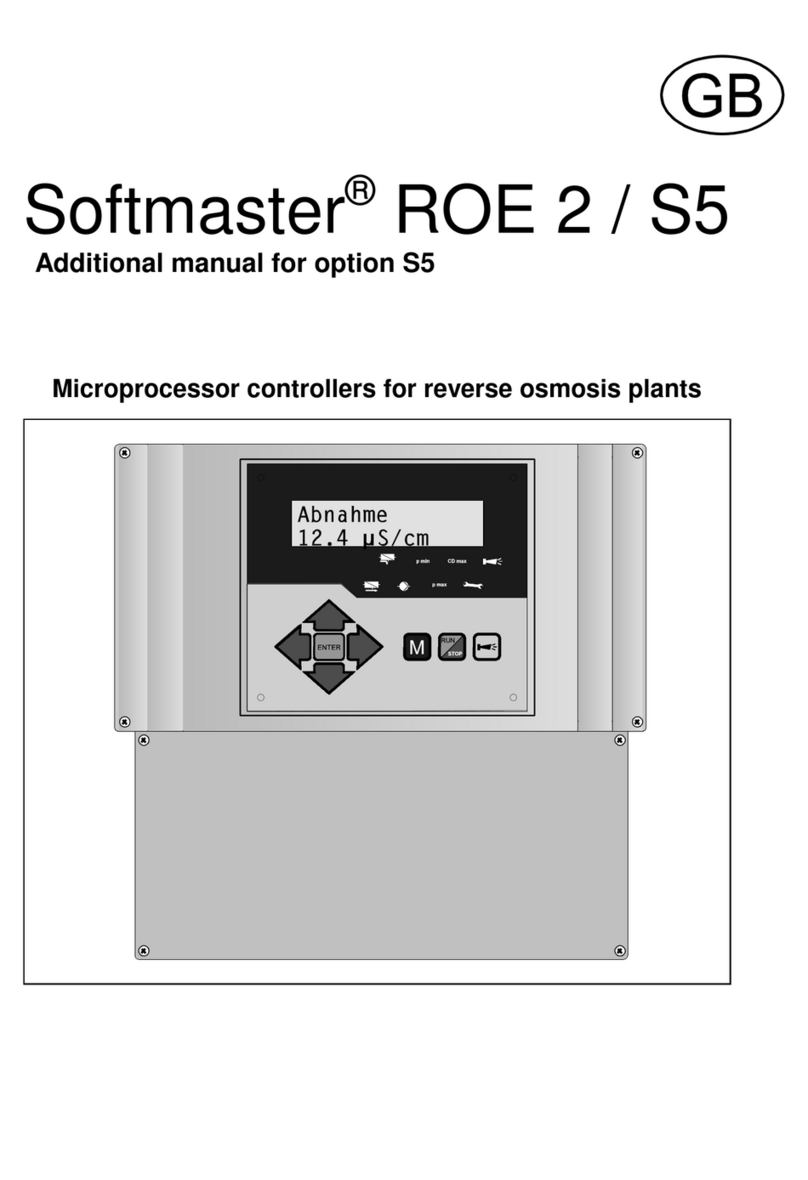
Heyl Neomeris
Heyl Neomeris ROE 2/S5 Additional manual
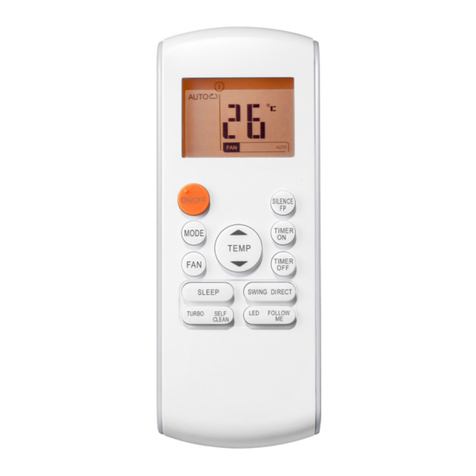
Lennox
Lennox M0STAT60Q-1 Operation instructions
